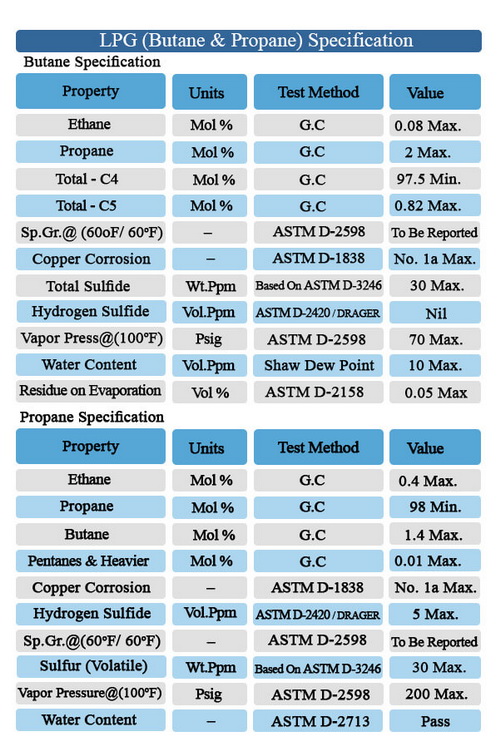LPG is an abbreviation for ‘Liquified Petroleum Gas’.It is a by – product of the refinement of crude oil. LPG is also produced when Natural Gas (Methane) is extracted from the gas fields and ‘dried’ before being piped to homes and industry.
There are two basic types of LPG. Butane is commonly used as lighter, heater or camping stove fuel and in recent times as a propellant for aerosol cans of paint, hair spray, fly spray and so on. Propane is the gas used for road fuel as its calorific value (how much heat a given amount of gas measured by weight will produce when burned) is significantly higher than that of Butane.
LPG has one unique and very special property. If mildly compressed it easily changes to a liquid state. This allows a large amount of gas (stored energy) to be contained in a relatively small space. The reverse process is just as fortunate – If decompressed (allowed to escape the pressure vessel) the liquid gas will quickly revert to its gaseous state (vapourise).
In other words, store LPG in a pressurised tank and it will remain liquid, occupying only a small space. Release some of the liquid and it will immediately revert to its gaseous state, expanding as it does so. Liquid Propane expands to 250 times its liquid volume when reverting to gas. The reverse applies, as gaseous LPG will ‘shrink’ by 250 times when compressed and liquification takes place.
If you release liquid propane into the atmosphere it will be seen to bubble and fizz. The liquid is boiling, releasing vapour (gas) as it does so just like boiling water releases steam, (vapour) albeit at a much cooler temperature. It will do this right down to minus 42 degrees C, which ensures that it will vapourise in all but the coldest climates and conditions.
Other gases (such as the natural gas many of us use in our homes) make a good fuel for an internal combustion engine but do not possess this unique property. Thus, far less compressed but non-liquid gas may be stored in a tank of a given volume and the vehicle’s range is severely reduced.
Liquid state propane is not heavy. Its S.G. (0.5) is lower than that of Petrol (0.72). In practical terms this is of no benefit to a vehicle designer as a pressurised vessel designed for LPG storage must be stronger (made of thicker material) negating any weight saving. Vapourised LPG, however, is ‘heavy’, i.e. heavier than the surrounding air if allowed to escape.
Many a pleasure boat has been blown up at the end of the season, the small amounts of gas leaked before every lighting of the stove combining to make a lethal charge in the boat’s bilge area. All that is needed is an ignition source (an electrical spark caused by a fault or maybe a thoughtless owner striking a match for light) and the stage is set for disaster. This is mentioned to underline the importance of venting any leakage from your vehicle’s gas tank, say after an accident impact.
Unlike petrol, LPG is in a pure or real gaseous state at normal atmospheric pressures and temperatures. It needs very little encouragement to vapourise and lends itself more readily to mixing with air (to get the Oxygen required for a combustible mixture). It needs no fuel pump to get it out of the tank and up to the engine, as the large pressure differential between the tank’s interior and the atmosphere takes care of that for free.
The Octane rating of LPG is far higher than that of raw Petrol, thus no Octane enhancing additives are required. Interestingly, in practical terms the only thing added to LPG is the pungent smell, designed to warn us of its presence. In its pure state the gas is colourless and odourless although it can be seen as ‘waves’ apparently ‘bending’ what we can see through it (this is ‘refraction’).
In economic terms LPG is cheap to produce (less additives and filtering are required). In the past it has been regarded as a ‘waste’ material occurring when more popular petroleum products were sought and made. In the UK, and most other oil or gas producing countries, there is currently a surplus of LPG.
In environmental terms the burning of LPG produces less CO2, virtually no CO or SO2. No harmful compounds of benzine or lead result form combustion simply because they are not added to enhance the octane of the fuel. Also note that when set against Diesel, LPG combustion produces NO particulates or ultra-fine particles.
It’s not just the environment that benefits (as if that were not enough). Your engine will not suffer the attack of acidic combustion products increasing internal wear and erosion. Engine oil deteriorates at a far slower rate as no acids and almost no carbon deposits reduce its effectiveness. Less oil sludge (and resultant blocking or restricting of crucial engine oil supply drillings or capilliaries) is a large gain. Average engine oil temperatures may be significantly reduced if circulated oil volumes are maintained, further reducing oil degradation and reducing engine wear. As for other parts of the vehicle, the useful life of exhaust systems has been proven to be extended by three times when LPG is used as a fuel.

Comments Off on LPG with 416 visit